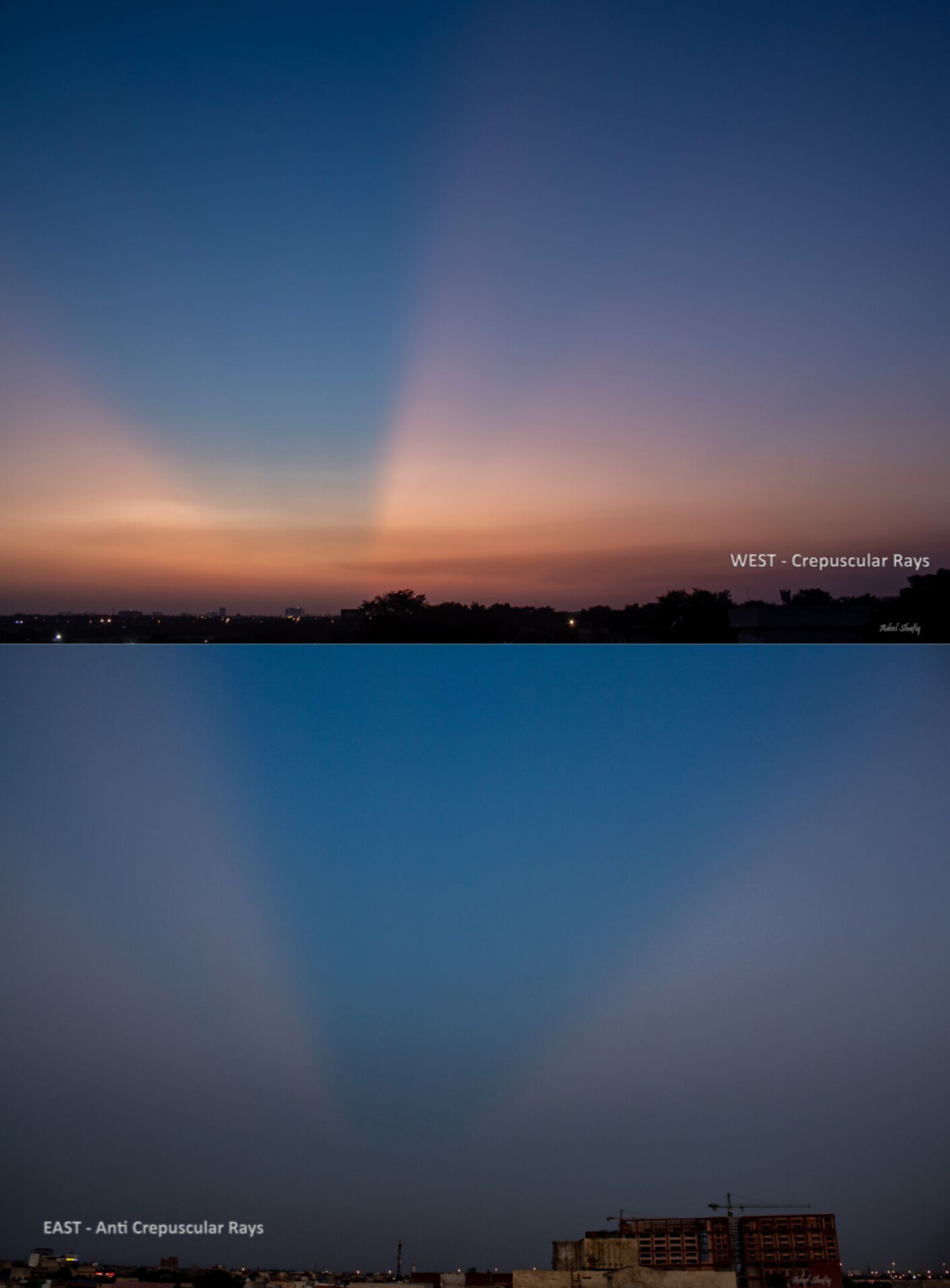EarthSky Community Photos
Submit your photo here. Comment or upvote on photo pages. Search via photographers' names. More improvements coming! To help, please donate.

Lahore, Punjab, Pakistan
05:54 pm
Canon EOS 1300D
Canon kit lens 18-55mm
Single images of 1/80 (crepuscular rays) and 1/30 (anti crepuscular rays) at 18mm with ISO 100.
Post processing done in Photoshop
Crepuscular and Anti crepuscular Rays!
We all have seen sunbeams coming through the clouds or at sunset when sunrays beam out from the sunset point during sunset or later during twilight period (the time after sunset till complete dark) spreading across the sky. These rays or sunbeams are termed as Crepuscular rays and they usually appear orange because the path through the atmosphere at sunrise and sunset passes through up to 40 times as much air as rays from a high Sun at midday. Particles in the air scatter short-wavelength light (blue and green) through Rayleigh scattering much more strongly than longer-wavelength yellow and red light.
What's interesting is that similar kind of rays can be seen opposite to the point where crepuscular rays are originating from the anti solar point called as anti crepuscular rays.
Anticrepuscular rays are essentially parallel, but appear to converge toward the antisolar point, the vanishing point, due to a visual illusion from linear perspective.
Anticrepuscular rays are most frequently visible around sunrise or sunset. This is because the atmospheric light scattering that makes them visible (backscattering) is larger for low angles to the horizon than most other angles. Anticrepuscular rays are dimmer than crepuscular rays because backscattering is less than forward scattering.
I was able to witness such a phenomenon last week and was able to capture it as well.
These 2 images show crepuscular rays (above) and anticrepuscular rays (below). These photos were taken a few minutes after sunset during civil twilight. The image above is looking due east just after sunset. The image on the bottom is at the antisolar point (due west)
I hope whenever you see crepuscular rays next time you turn back exactly in the opposite direction and try to find this somewhat rare phenomenon.








